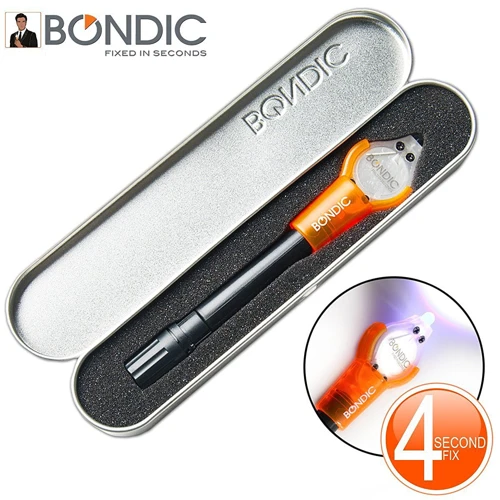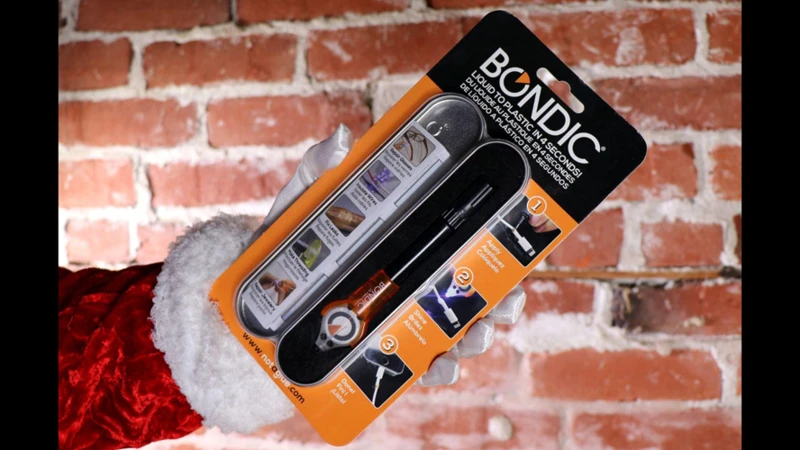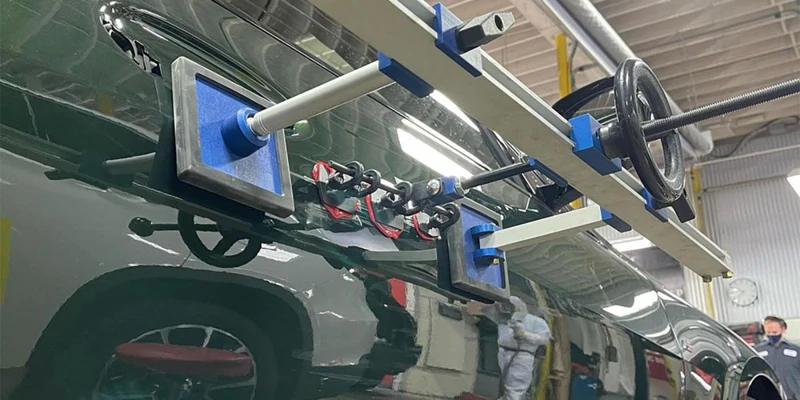When it comes to making repairs that last, a groundbreaking tool has emerged in the world of adhesive technology. This tool is none other than bondic, a product that has transformed how we approach fixing everyday items. Its unique properties and ease of use have garnered attention from DIY enthusiasts to professional repairpersons.
What is Bondic?
Bondic is not your average adhesive; it’s a liquid plastic welder that hardens under UV light. Unlike traditional glues, it only sets when exposed to this specific type of light, giving users complete control over the bonding process. This innovative feature is what sets bondic apart in the world of adhesives.
Why Choose Bondic Over Traditional Glues?
The reasons to opt for bondic over traditional glues are clear. Its unique curing process eliminates the worry of quick drying or unwanted sticking. Furthermore, it provides a durable bond that is water-resistant and withstands a range of temperatures, making it a versatile choice for numerous applications.
The Science Behind Bondic: Understanding UV Glue
Peering into the science of bondic uv glue reveals the mechanism that makes it so effective. It’s a fascinating journey into the world of polymers and light-activated curing, showcasing why bondic stands out from conventional adhesives.
What Makes Bondic UV Glue Special?
The specialty of bondic uv glue lies in its formulation. It consists of a liquid plastic resin that remains liquid until it’s exposed to ultraviolet light. This allows for precision and strength, as the resulting bond is not just a surface adhesive but a solid plastic layer.
How Does Bondic Work?
Bondic works through a process known as polymerization. When the resin is exposed to UV light, it triggers a chemical reaction that transforms the liquid into a solid, robust plastic within seconds. This reaction is the cornerstone of bondic’s effectiveness.
Step-by-Step Guide: How to Use Bondic
Understanding how to use bondic is crucial for achieving the best results. Whether you’re repairing a broken toy or mending a split wire, following the correct steps will ensure a strong, long-lasting bond.
Preparing the Surface for Bonding
Before applying bondic, ensure the surface is clean, dry, and free of oil or grease. Roughening the surfaces with sandpaper can improve adhesion, creating a stronger bond between the materials.
Applying Bondic: Techniques for Different Materials
The application of bondic varies with material. For plastics and metals, apply a thin layer, while porous materials like wood may require more product to fill the gaps. It’s the versatility in application techniques that makes bondic highly adaptable.
Curing Bondic with UV Light
Once bondic is in place, expose it to the UV light for about 4 seconds. The light should be held close to the area for optimal curing. The control over the timing of the cure is a key advantage of using bondic.
Finishing Touches: Sanding and Painting
After curing, you can sand the area for a smooth finish. Bondic can also be painted over, making it an ideal solution for visible repairs where aesthetics are important.
Practical Applications of Bondic
The practical applications of bondic are vast, from intricate crafts to essential home repairs. Its precision and strength have made it a favorite among various users.
Repairing Broken Items with Precision
Bondic excels in mending broken items with precision. Jewelry, eyeglasses, and even dishware can be fixed with pinpoint accuracy, avoiding the mess associated with traditional glues.
Creating and Enhancing Models, Sculptures, and Crafts
Crafters and model builders find bondic to be a game-changer. It allows for adding small details and reinforcing parts that would be challenging with other adhesives.
Electronics Repairs: A Lifesaver for Frayed Wires
The non-conductive nature of bondic makes it a lifesaver for repairing frayed wires and circuit boards. The precise application prevents further damage to delicate electronic components.
Innovating with 3D Printing Projects
In the realm of 3D printing, bondic can be used to fill in gaps, bond parts together, and even modify printed items, showcasing its role in innovation and creativity.
Bondic Reviews: What Users Are Saying
Bondic reviews often highlight the product’s effectiveness and versatility. Let’s delve into the feedback from both professionals and everyday users.
Professional Opinions on Bondic
Professionals often commend bondic for its strength and durability. Its ability to bond a variety of materials with precision is frequently praised in professional circles.
Customer Testimonials and Success Stories
Customer testimonials abound with success stories of saved heirlooms and emergency repairs. The common thread in these stories is satisfaction with bondic’s performance.
Maximizing the Potential of Bondic: Tips and Tricks
To truly maximize the potential of bondic, it’s essential to consider some helpful tips and tricks. These can extend the life of your repairs and enhance the product’s effectiveness.
Ensuring Long-Lasting Repairs
For long-lasting repairs, apply bondic in layers for thicker applications. Each layer should be cured with UV light before adding the next, ensuring a solid, durable bond.
How to Avoid Common Mistakes
Avoiding common mistakes with bondic involves careful preparation and application. Always clean the surfaces thoroughly, and be mindful of the UV light’s exposure time to prevent under or over-curing.
Safety First: Precautions When Using Bondic
While bondic is user-friendly, certain safety precautions should be taken to ensure a safe experience. Proper handling and storage are key to preventing accidents and maintaining the product’s integrity.
Handling Bondic Safely
When handling bondic, wear protective eyewear to shield your eyes from the UV light. Additionally, avoid skin contact with the uncured resin and use in a well-ventilated area.
Storing Bondic Correctly
Proper storage of bondic involves keeping it away from sunlight and in a cool, dry place. This precaution prevents premature curing and extends the shelf life of the product.
Conclusion: The Future of Repairs with Bondic
Bondic is poised to have a substantial impact on the future of DIY and professional repairs. Its innovative approach to adhesive technology promises a new era of efficiency and reliability.
The Impact of Bondic on DIY and Professional Repairs
The impact of bondic on repairs is already evident. Its precision, strength, and versatility offer a level of control and durability that traditional glues simply cannot match.
When it comes to the world of adhesives, there’s a glue for every project and purpose. If you’ve recently discovered Bondic and are curious about how to use this unique type of glue, our article will guide you through the process. Bondic glue is known for its strength and versatility, but if your project requires different types of adhesives, you might want to explore our guides on other adhesive options. Learn about the specifics of traditional adhesives with our article on how to use adhesive glue, understand the nuances of using UV-sensitive gels in our piece on how to use gel glue, or find out the best practices for securing dentures with our insights on how to use denture glue. Each type of glue has its own application techniques and uses, so be sure to choose the right one for your needs.
Where to Find Bondic
Finding bondic is easy, as it’s available online and in select retail stores. Its accessibility ensures that anyone can benefit from this exceptional adhesive technology for their repair needs.



